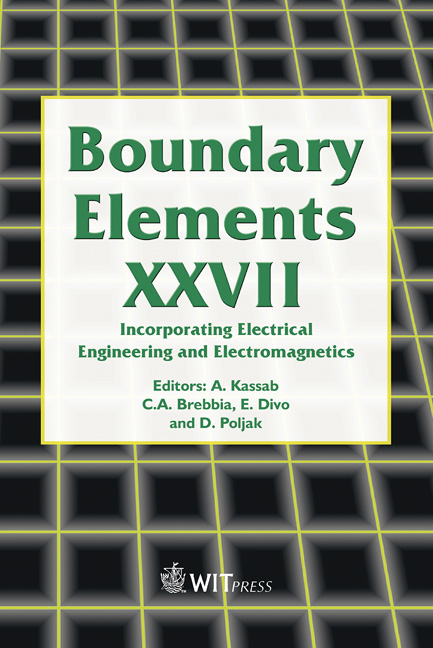Analytical Characterization Of A Line Bend
Price
Free (open access)
Transaction
Volume
39
Pages
10
Published
2005
Size
328 kb
Paper DOI
10.2495/BE050551
Copyright
WIT Press
Author(s)
S. Tkatchenko, F. Rachidi & J. Nitsch
Abstract
In this paper, we propose an analytical approach to characterize a transmission line bend. First, an electric field integral equation is derived under the thin wire assumption. The equation is solved using perturbation theory and analytical expressions are derived for the reflection and transmission coefficients associated with the line bend. The derived analytical expressions are compared with ‘exact’ numerical results published by other authors and a very good agreement is found. The developed analytical expressions can also be used to evaluate the radiated power associated with the line bend. 1 Introduction The current along a uniform transmission line in absence of any external excitation can be represented as the sum of a forward propagating wave ) exp( jkz − and a backward-propagating wave ) exp( jkz . Further, no radiation is associated with such a line [1]. Radiation effects appear when the uniformity of the line is disturbed [2]. In particular, for lines of finite length, the line uniformity is disturbed near the loaded terminals of the line. Another type of nonuniformity is due to the presence of 'bends' in the line (see Fig. 1). This is an important problem in electromagnetic compatibility and has been the subject of many recent publications (e.g. [3-7]). In this case, radiation occurs in the 'near-bend' region. Quantitatively, the current distribution along the nonuniform line, sufficiently far from the near-bend region, can be described in terms of complex reflection and transmission coefficients R and T associated with the bend ≥ − − ≤ + − = h l jkl T h l jkl R jkl l I 2 ) exp( 2 ) exp( ) exp( ) ( (1)
Keywords





